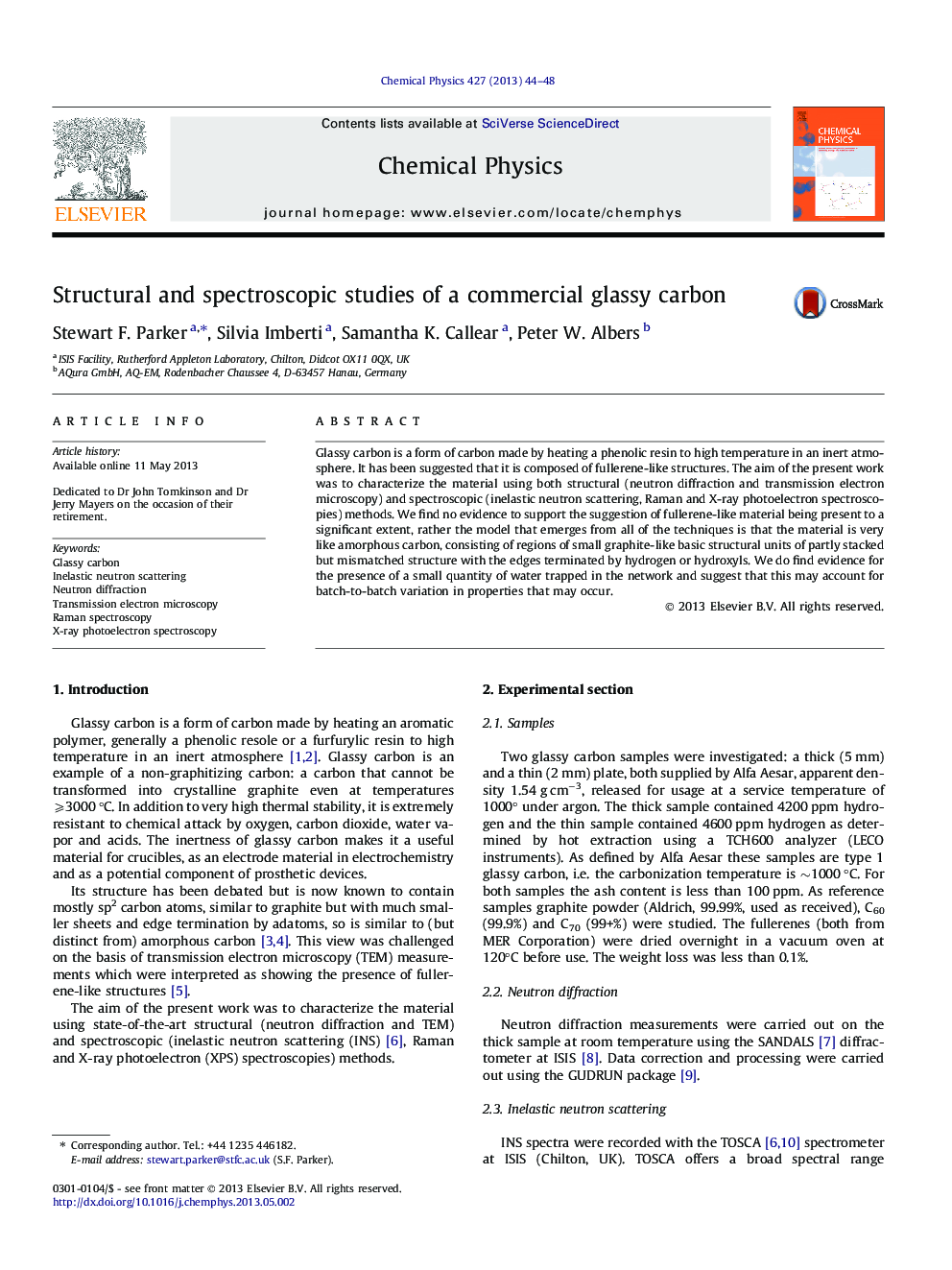| Article ID | Journal | Published Year | Pages | File Type |
|---|---|---|---|---|
| 5373701 | Chemical Physics | 2013 | 5 Pages |
â¢Structural and spectroscopic probes show that glassy carbon is very like amorphous carbon.â¢No evidence for fullerene-like material being present to a significant extent.â¢A small quantity of water is trapped in the network and may account for batch-to-batch variation in properties.
Glassy carbon is a form of carbon made by heating a phenolic resin to high temperature in an inert atmosphere. It has been suggested that it is composed of fullerene-like structures. The aim of the present work was to characterize the material using both structural (neutron diffraction and transmission electron microscopy) and spectroscopic (inelastic neutron scattering, Raman and X-ray photoelectron spectroscopies) methods. We find no evidence to support the suggestion of fullerene-like material being present to a significant extent, rather the model that emerges from all of the techniques is that the material is very like amorphous carbon, consisting of regions of small graphite-like basic structural units of partly stacked but mismatched structure with the edges terminated by hydrogen or hydroxyls. We do find evidence for the presence of a small quantity of water trapped in the network and suggest that this may account for batch-to-batch variation in properties that may occur.
Graphical abstractDownload full-size image
